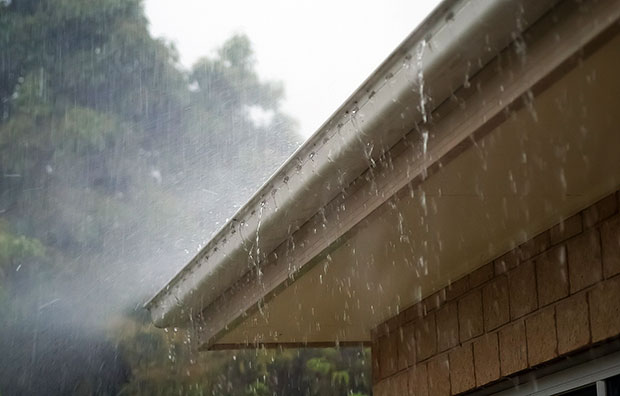As more and more homes are moving towards an environmentally sustainable model, there has been an increase in the installation of rainwater collection tanks. Whether it’s to lower the cost of a home’s water bills or as an environmentally friendly method of reusing rainwater, storage tanks can provide many benefits for modern homeowners. Much like any part of our homes however, a rainwater tank requires regular maintenance. This is to not only provide water that reliably flows when needed, but is also free from contaminants.
So, what is involved in rainwater tank maintenance?

How does it all work?
Before we look at some maintenance tips, it helps to understand how a rainwater catchment system works. Normally when rain falls, it either lands on the ground and is absorbed by our gardens or flows from our gutters into our underground stormwater collection tanks to be absorbed by the earth. A rainwater collection tank works by sending the water from a homes gutters into an above ground collection tank. From here it is stored until needed, and can be pumped into the home for bathing or flushing our toilets, or used to water our lawns and gardens.
With a basic understanding of how our rainwater tanks work, the following maintenance items will ensure that they will be as efficient as they possibly can for years to come:
- Keep your gutters clean – As the first point of contact for a rainwater system, any contaminants in the gutters have a high chance of being washed through the system. This can come in the form of dirt, leaves, branches and even faecal matter from local birds and wildlife. Installing mesh will minimise the amount of leaves and branches that enter the gutters, and regular cleaning will take care of the rest.
- Be wary of blockages – By cleaning the gutters regularly, the chance of blockages that disrupt the waterflow are greatly reduced, but they can still arise from other unforeseen circumstances. Homeowners should be observant of gutters that overflow when it rains, as this is a tell-tale sign that there is a blockage in the guttering.
- Keep the mosquitos out – Water tanks are ideal spots for mosquitos and other pests to set up breeding nests. While it’s all well and good to have a mosquito mesh protecting the tank, the mesh needs to be regularly inspected. The mesh can deteriorate over time, so it is vital to check that it is still intact.
- Check filters regularly – Filters can be applied to rainwater catchment systems to prevent some contaminants from entering the storage tank. These filters will be fine enough to pass water through, but can become restricted over time as contaminants build up. Regular cleaning or replacement of the filters (based on the type of filters used) will ensure that the water will flow unimpeded.
- Keep pumps in working order – Any piece of equipment that has moving parts will need regular maintenance, and water pumps are no exception. Keeping pumps in good working order will ensure that the right pressure is maintained throughout the system, allowing the water to easily get to where it’s wanted.
- Professionally clean the tank – Even with filters equipped, sediment will still make its way into the bottom of the rainwater tank. This sediment will turn to sludge over time, and can become a breeding ground for bacteria. The department of health recommends that tanks are inspected for sludge every two to three years and professionally cleaned if the bottom of the tank is full of sediment.
By regularly maintaining a rainwater catchment system, homeowners can have a clean and free supply of water for a variety of purposes. To find out more on how you can incorporate a rainwater system into your home, call the friendly team at JEDI Plumbing today on 0411 774 381.
